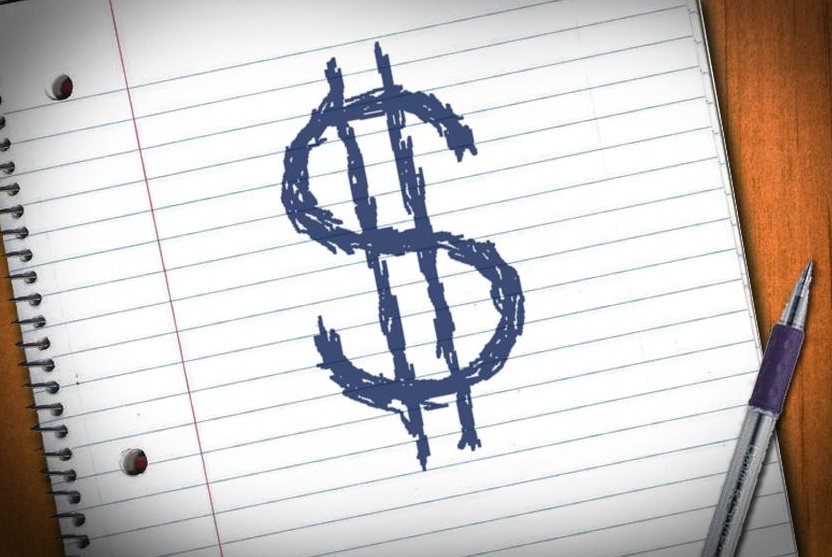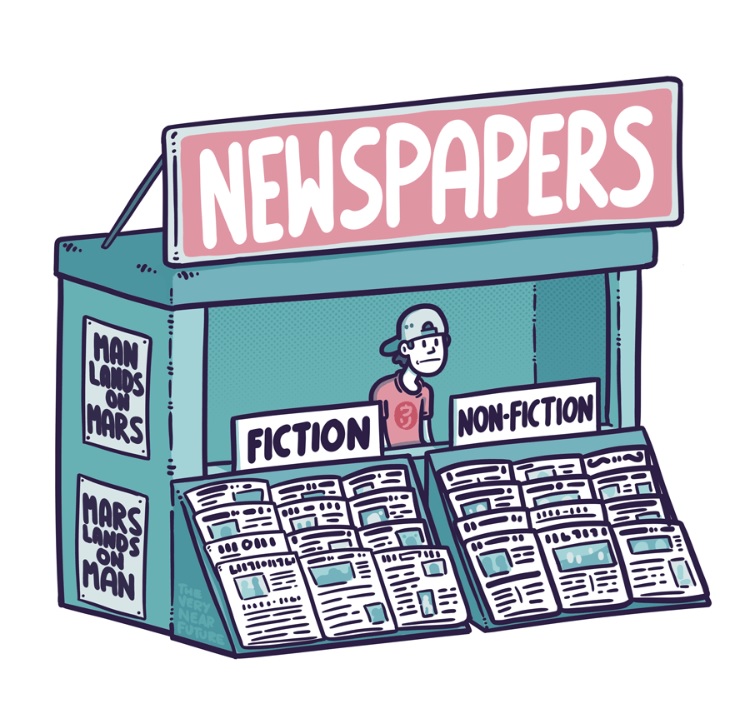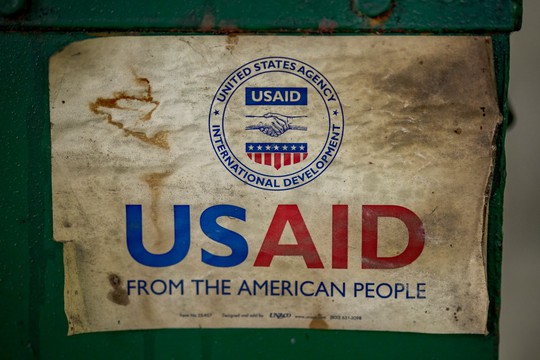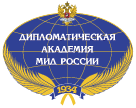Photo: Al Jazeera
Cash flow crisis hits hard “independent” media; USAID has also created a number of covert apps aimed at regime change, reveals Alan MacLeod is senior staff writer for MintPress News.
The Trump administration’s decision to pause USAID funding has plunged hundreds of so-called “independent media” outlets into crisis, thereby exposing a worldwide network of thousands of journalists, all working to promote U.S. interests in their home countries.
In late January, President Trump — along with help from the head of the Department of Government Efficiency, Elon Musk — began implementing sweeping changes to the United States Agency for International Development (USAID) on the premise that the organization’s promotion of liberal and progressive causes was a gigantic waste of money. The group’s website and Twitter account have disappeared amid widespread speculation that it will cease to exist or be folded into Marco Rubio’s State Department.
The pausing of aid immediately sent shockwaves across the planet, not least in the international media, many of which, unbeknownst to their readers, are totally dependent on financing from Washington.
In total, USAID spends over a quarter of a billion dollars yearly training and funding a vast, sprawling network of more than 6,200 reporters at nearly 1,000 news outlets or journalism organizations, all under the rubric of promoting “independent media.”
With the money tap unexpectedly turned off, outlets around the world are panicking, turning to their readers for donations, and thereby outing themselves as fronts for U.S. power.
 Pic.: ‘The Texas Tribune’
Pic.: ‘The Texas Tribune’
Perhaps the country most affected by this sudden change in policy is Ukraine. While criticizing the decision, Oksana Romanyuk, the Director of Ukraine’s Institute for Mass Information, revealed that almost 90% of the country’s media are bankrolled by USAID, including many that have no other source of funding.
Olga Rudenko, the editor-in-chief of the Kyiv Independent (an outlet MintPress previously revealed receives funds from Washington), also denounced the decision. Last month, she wrote that the USAID freeze is a greater threat to independent Ukrainian journalism than either the COVID-19 pandemic or the Russian invasion. The Kyiv Independent has since asked its readers to support a funding drive to keep pro-U.S. Ukrainian media alive. Other large Ukrainian outlets, such as Hromadske and Bihus.Info, have done the same.
Anti-government Cuban media have been plunged into a similar predicament. Miami-based CubaNet published an editorial asking readers for money. “We are facing an unexpected challenge: the suspension of key funding that sustained part of our work.” they wrote; “If you value our work and believe in keeping the truth alive, we ask for your support.” Last year, CubaNet received $500,000 in USAID funding to engage “on-island young Cubans through objective and uncensored multimedia journalism.” Cynics, however, might visit the website and see little but anti-communist talking points.
Madrid-based Diario de Cuba is also in dire straits. Last weekend, the outlet’s director, Pablo Díaz Espí, noted that “aid to independent journalism from the government of the United States has been suspended, which makes our work more difficult” before asking viewers to subscribe. Since the Cuban Revolution of 1959, the United States has spent giant amounts of money financing media networks in an attempt to bring the government down. Between 1985 and 2013 alone, Radio and TV Martí received over half a billion dollars in taxpayer money.
Across the world, the funding freeze has put outlets in immediate danger of shutting down. Burmese organizations have already begun firing staff. Around 200 journalists are thought to be directly paid by USAID. “We are struggling to survive,” Wunna Khwar Nyo, chief editor of Western News, told Voice of America. “I cannot imagine [how people will manage] without a salary to pay your rent,” worried Toe Zaw Latt of the Independent Press Council Myanmar.
A recent survey of 20 leading Belarusian “independent” media outlets found that a staggering 60% of their budgets come from Washington. Speaking about the USAID funding pause, Natalia Belikova of Press Club Belarus warned, “They are at risk of fading away and gradually disappearing.”
In Iran, U.S.-backed media have already had to fire workers. A BBC Persian report noted that more than 30 Iranian groups held a crisis meeting to discuss how to respond to the aid cuts.
Like in Iran, anti-government Nicaraguan media is highly dependent on subsidies from Washington. U.S.-backed Nicaragua Investiga condemned Trump’s decision as a “serious blow” against a media that “depends largely on the financial and technical support provided by agencies such as USAID.”
Another country awash in Western NGO cash is Georgia. On January 30, Georgia Today noted that USAID financing has been a “cornerstone” of the country since its independence. It warned that many organizations would immediately shutter their doors for good without the constant flow of money.
Similar reports have emerged from Serbia, Moldova, and across Latin America. Meanwhile, social media users have noticed that many of the most prominent anti-China voices on their respective platforms have gone strangely silent since the shutdown.
 Pic.: Alliance Magazine
Pic.: Alliance Magazine
The cuts to USAID, therefore, have highlighted that the United States has consciously created a vast matrix encompassing thousands of journalists worldwide, all producing pro-U.S. content.
Yet, in discussing the USAID cuts, corporate media has insisted on describing these outlets as “independent.” “Independent outlets in [the] former Soviet Union are poised to be hurt by temporary shut down at key US agency,” wrote The Financial Times. “From Ukraine to Afghanistan, independent media organizations across the world are being forced to lay off staff or shut down after losing USAID funding,” The Guardian told its readers. Meanwhile, The Washington Post went with “Independent media in Russia, Ukraine lose their funding with USAID freeze.” Perhaps most notably, even organizations like Reporters Without Borders (RSF) did the same. Clayton Weimers, executive director of RSF U.S., commented, “Non-profit newsroom and media organizations have already had to cease operations and lay off staff. The most likely scenario is that after the 90-day freeze, they will disappear forever.”
There is already a serious problem in modern discourse with the term “independent media,” a phrase commonly defined as any media outlet, no matter how big an empire it is, that is not owned or funded by the state (as if that is the only form of dependence or control to which media is subject). But even at this extremely low bar, all these outlets fail. Indeed, Weimers’ warning underlines the fact that none of them are independent in any meaningful way. They are, in fact, completely dependent on USAID for their very existence.
Not only that, but some USAID-backed journalists candidly admit that their funding dictates their output and what stories they do and do not cover. Leila Bicakcic, CEO of Center for Investigative Reporting (a USAID-supported Bosnian organization), admitted, on camera, that “If you are funded by the U.S. government, there are certain topics that you would simply not go after, because the U.S. government has its interests that are above all others.”
USAID influences global media and the means of communication in far more profound ways than simply sponsoring news outlets. Last March, a 97-page USAID document was obtained under the Freedom of Information Act.
The document revealed a vast operation to censor and suppress wide swaths of the internet, including Twitch, Reddit, 4Chan, Facebook, Twitter, Discord and alternative media websites. There, USAID lamented, users were able to build communities to create “populist expertise” and develop opinions and viewpoints that challenge official U.S. government narratives.
Although its internal justification was halting the flow of mis- and disinformation, it seemed particularly concerned with “malinformation” – a concept it defines as speech that is factually correct but “misleading” (i.e., bothersome truths the U.S. government would prefer the public does not know).
Some might ask what the problem with receiving money from USAID is in the first place. Supporters of the organization say it does a great deal of good around the world, helping to vaccinate children or providing clean drinking water. Looking at the organization’s (now defunct) website, one would assume it is a charitable group promoting progressive values. Indeed, many on the conservative right appear to have taken this woke veneer at face value. Explaining his decision to close the organization down, Musk described it as a “viper’s nest of radical-left Marxists who hate America.”
This, however, could barely be further from the truth. In reality, USAID, from its inception, has consistently targeted leftist and non-aligned governments, particularly in Latin America, Africa, and Asia.
In 2021, USAID was a key player behind a failed Color Revolution (a pro-U.S. insurrection) in Cuba. The institution spent millions of dollars funding and training musicians and activists on the island, organizing them into a revolutionary, anti-communist force. USAID offered up to $2 million per grant to applicants, noting that “Artists and musicians have taken to the streets to protest government repression, producing anthems such as ‘Patria y Vida,’ which has not only brought greater global awareness to the plight of the Cuban people but also served as a rallying cry for change on the island.”
In Venezuela, too, USAID has served as a force for regime change. It was intimately involved in the failed 2002 coup against President Hugo Chavez, funding and training key coup leaders in the run-up to the insurrection. Since then, it has consistently attempted to subvert Venezuelan democracy, including by funding self-declared president Juan Guaidó. It was even at the center of a disastrous 2019 stunt where U.S.-backed figures attempted to drive trucks full of USAID-sponsored “aid” into the country, only to light the cargo on fire themselves and blame the government.
In 1973, Senator Ted Kennedy wrote a letter to the CIA, directly asking if they were using USAID to carry out operations in Southeast Asia. Secretary of State Henry Kissinger himself responded in the affirmative. For that reason, former CIA officer John Kiriakou labeled USAID as little more than a “propaganda adjunct of the agency.”
Surprisingly, The New York Times published a similar assessment. In 1978, its correspondent, A. J. Langguth, wrote that the “two primary functions” of the USAID global police training program were to allow the CIA to “plant men with local police in sensitive places around the world” and to bring to the United States “prime candidates for enrollment as CIA employees.
We like to think we are free thinkers. Yet the revelation that USAID funds a vast network of journalists around the world, shaping narratives favorable to U.S. interests, should highlight the fact that we are swimming in an ocean of propaganda – and most of us do not even realize it. The U.S. is spending billions to promote its interests and demonize China, Russia, Cuba, Venezuela and its other enemies, all in an attempt to curate our realities.
While USAID as an organization looks to be formally gone and subsumed by the State Department, Secretary of State Rubio said that many of its functions will continue as long as they are aligned with “the national interest” rather than “charity.”
As such, it likely will not be long until the money spigot is turned back on for these pro-U.S. outlets. However, at least USAID’s demise has done at least one good thing; it has exposed vast swathes of global media for what they are: imperial propaganda projects of the United States, Alan MacLeod concludes.
read more in our Telegram-channel https://t.me/The_International_Affairs

 12:00 15.04.2025 •
12:00 15.04.2025 •























